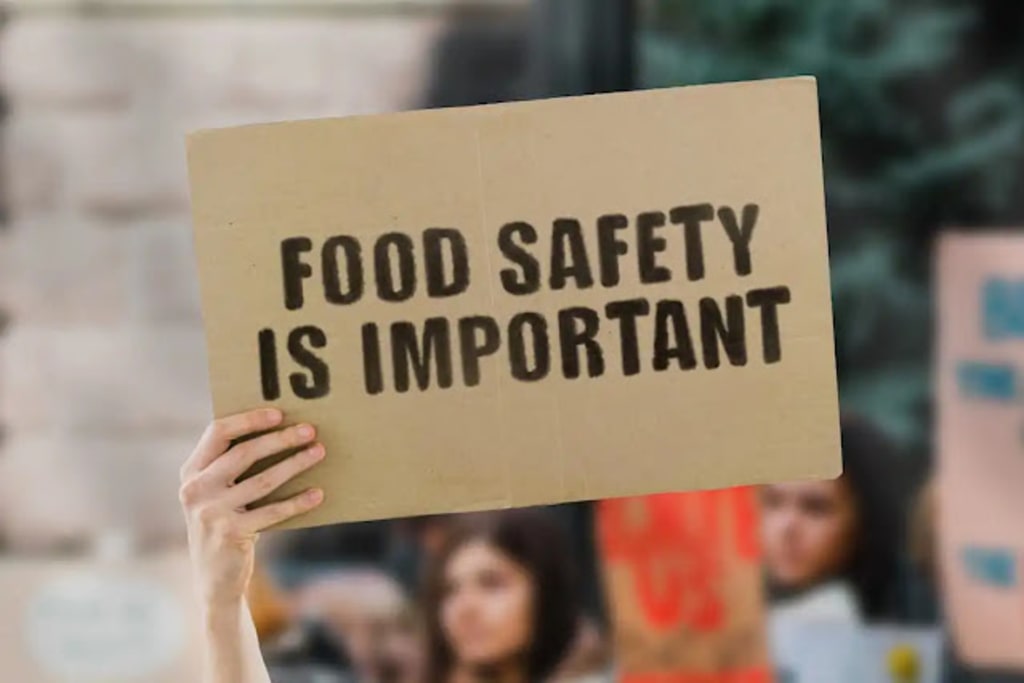Ensuring Health and Food Safety
A Vital Responsibility

Ensuring Health and Food Safety
In today's fast-paced world, where convenience often takes precedence over careful consideration, ensuring health and food safety is of utmost importance. The choices we make regarding the food we consume directly impact our well-being and quality of life. Therefore, it is essential to understand the significance of health and food safety practices in safeguarding our health and promoting a sustainable future. This blog aims to shed light on key aspects of health and food safety, exploring their importance and providing actionable insights for individuals and communities.
1. The Importance of Health and Food Safety
Preserving Human Health
Foodborne illnesses and diseases caused by contaminated food can have severe consequences on human health. Ensuring proper food safety measures significantly reduces the risk of such illnesses, protecting individuals from infections, food poisoning, and long-term health complications.
Consumer Confidence and Trust
Maintaining high standards of health and food safety cultivates consumer trust in the food industry. When individuals have confidence in the safety and quality of the food they consume, it not only contributes to their peace of mind but also supports the growth and sustainability of businesses.
Economic Implications
Food safety incidents can have far-reaching economic implications, affecting food producers, distributors, and the entire supply chain. By prioritizing health and food safety, organizations can avoid costly recalls, legal consequences, and reputational damage, leading to a more resilient and prosperous industry.
2. Understanding the Hazards
. Biological Hazards
Microorganisms, such as bacteria, viruses, and parasites, are common biological hazards found in food. Understanding their sources, growth conditions, and prevention methods is crucial to ensuring food safety.
Chemical Hazards
Chemical contaminants, such as pesticides, heavy metals, and additives, can enter the food chain at various stages. Strict monitoring, regulation, and adherence to safety standards are necessary to minimize the risks associated with these hazards.
Physical Hazards
Foreign objects, such as glass, plastic, or metal fragments, pose physical hazards in food. Implementing stringent quality control measures and employing good manufacturing practices are essential to prevent such hazards.
3. Promoting Health and Food Safety
Promoting Health and Food Safety
Personal Hygiene and Safe Handling
Adhering to proper personal hygiene practices, such as handwashing, is fundamental to preventing the spread of pathogens. Additionally, safe food handling techniques, including separation of raw and cooked foods, proper storage, and cooking temperatures, play a vital role in minimizing risks.
Regulatory Framework and Standards
Governments and international bodies have established regulatory frameworks and standards to ensure health and food safety. Compliance with these regulations is crucial for all stakeholders involved in the food industry, from producers to retailers and consumers.
Traceability and Transparency
Implementing robust traceability systems enables the tracking and identification of food products throughout the supply chain. Transparent communication between producers, suppliers, and consumers promotes accountability and builds trust.
Education and Awareness
Empowering individuals with knowledge about health and food safety is key to fostering responsible consumer behavior. Educating the public about proper food handling, label reading, and making informed choices equips them to protect their health and make healthier decisions.
4. The Role of Technology
Food Testing and Monitoring
Technological advancements have significantly improved food testing capabilities, enabling rapid and accurate detection of contaminants. Tools such as DNA-based testing and sensor technology enhance food safety monitoring and facilitate early intervention.
Blockchain and Supply Chain Transparency
Blockchain technology offers a decentralized and immutable platform for recording and verifying food-related information. Its implementation can enhance supply chain transparency, enabling consumers to access comprehensive information about the origin, handling, and safety of food products.
Big Data Analytics
Leveraging big data analytics can help identify patterns, predict potential risks, and proactively manage food safety issues. Analyzing vast amounts of data can uncover valuable insights to improve processes and prevent hazards effectively.
Finally
Prioritizing health and food safety is not only a responsibility shared by governments and the food industry but also an individual obligation. By understanding the importance of health and food safety, recognizing potential hazards, promoting safe practices, and harnessing technology, we can collectively create a safer and healthier future. Let us embrace this responsibility and make informed choices to safeguard our well-being and the well-being of future generations.
About the Creator
Muazzam shahzad
I am a prolific writer and passionate blogger, consistently delivering compelling content that captivates readers and resonates with a wide audience.






Comments
There are no comments for this story
Be the first to respond and start the conversation.